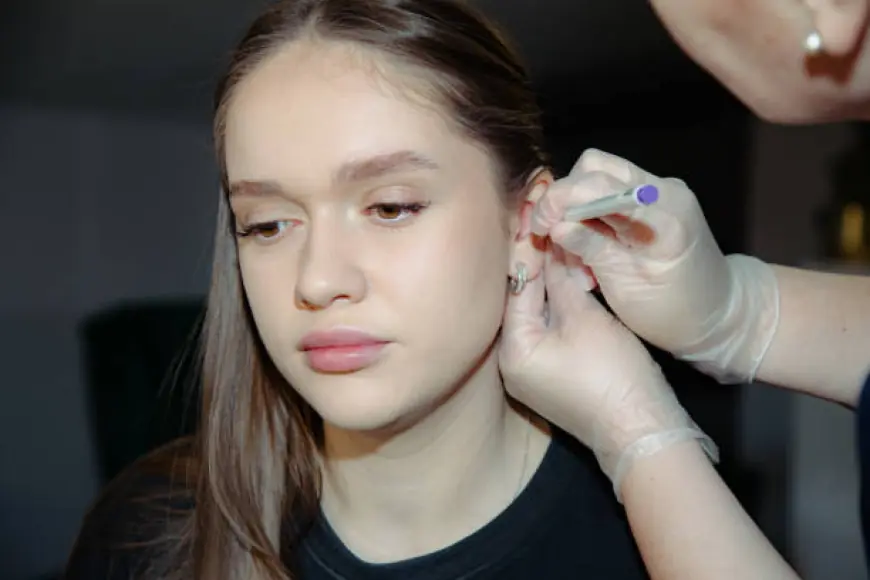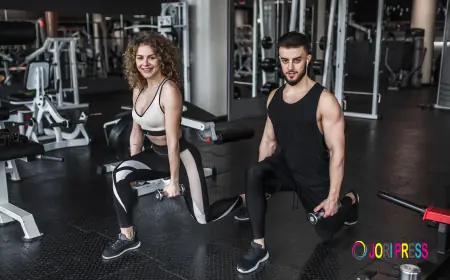How Effective Is Otoplasty for Ear Reconstruction in Riyadh?
Otoplasty in Riyadh offers expert ear reshaping and contouring to create a more proportionate and harmonious appearance.

Otoplasty, commonly known as ear reshaping surgery, is a specialized surgical procedure aimed at correcting deformities and enhancing the appearance of the ears. This procedure is particularly used to address issues such as protruding ears, asymmetry, or ear damage caused by injury or congenital conditions. The primary goal of otoplasty is to create ears that are proportionate and harmonious with the rest of the facial features, resulting in improved facial balance and aesthetics.
The Effectiveness of Otoplasty in Riyadh
Otoplasty in Riyadh (جراحة رأب الجفن في الرياض) is widely recognized for its high effectiveness in ear reconstruction and reshaping. The surgical techniques employed focus on correcting two main anatomical concerns: excessive ear cartilage that pushes the ears outward and the absence of natural cartilage folds that keep ears close to the head. By carefully reshaping the cartilage and repositioning the ears, patients in Riyadh experience long-lasting and natural-looking results. This procedure not only improves physical appearance but also significantly enhances self-confidence and social comfort for patients of all ages.
Key Benefits of Otoplasty in Riyadh
-
Permanent aesthetic improvement: Once reshaped, the position and contour of the ears are typically permanent with minimal risk of recurrence.
-
Boost in personal confidence: Many patients report a positive psychological impact and improved self-esteem, which can affect social interactions and quality of life.
-
Suitability for all ages: Otoplasty is commonly performed on children (usually after age 5-6) and adults, making it a versatile solution for patients with various needs.
The Otoplasty Procedure and Recovery
The procedure involves making discreet incisions behind the ears, through which the cartilage is sculpted and repositioned to achieve the desired shape. Patients usually undergo either local anesthesia or general anesthesia depending on individual preference and surgical complexity. Recovery is manageable, with minor swelling and discomfort being common during the first few weeks. A protective head dressing and sometimes headbands are used post-surgery to support proper healing.
Most patients can return to regular daily activities within 1 to 2 weeks, while full healing and stabilization of results typically occur over a few months. Any scars are generally well concealed behind the ears, ensuring an aesthetically pleasing outcome.
Why Choose Otoplasty in Riyadh?
Riyadh offers access to highly skilled specialists employing advanced techniques and personalized care, ensuring optimal surgical outcomes. The combination of medical expertise and state-of-the-art surgical facilities makes Otoplasty in Riyadh a sought-after option for individuals looking to improve ear symmetry and reconstruction. Procedures are tailored to each patient’s unique anatomy and goals, enhancing both the functional and cosmetic results.
If you are considering ear reshaping surgery and want expert care, schedule a consultation at Royal Clinic Saudia, where experienced professionals can guide you through the process and help you achieve your desired results.
(FAQ's):
How long does it take to see the final results after otoplasty in Riyadh?
While initial changes are visible immediately, full results typically take 2 to 3 months as swelling subsides and the ear shape stabilizes.
Is otoplasty suitable for children in Riyadh?
Yes, otoplasty is often performed on children after the age of 5 or 6 when ear growth is mostly complete, helping improve their confidence early on.
Are there any visible scars after otoplasty?
Incisions are made behind the ear, resulting in minimal and well-hidden scars that fade over time.
What are the risks associated with otoplasty?
Risks are rare but may include mild asymmetry, scarring, or minor complications such as bleeding or infection, which are addressed by careful surgical technique and post-operative care.
What's Your Reaction?
 Like
0
Like
0
 Dislike
0
Dislike
0
 Love
0
Love
0
 Funny
0
Funny
0
 Angry
0
Angry
0
 Sad
0
Sad
0
 Wow
0
Wow
0
















































